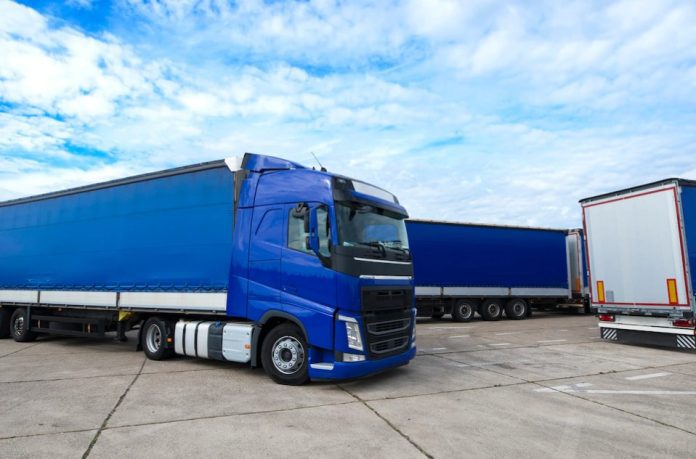In the world of commercial vehicles, fleet safety, and efficiency are paramount. Whether it’s a fleet of delivery trucks, long-haul trailers, or buses, the well-being of drivers and the optimization of operations are crucial for success. One technology that plays a vital role in achieving these objectives is the Tire Pressure Monitoring System (TPMS). In this article, we will explore the significance of TPMS in commercial vehicles and how it ensures fleet safety and efficiency.
Understanding TPMS
TPMS refers to a system that constantly monitors the air pressure in a vehicle’s tires. Its primary purpose is to alert drivers and fleet managers of any significant deviations from the recommended tire pressure. The system typically consists of sensors attached to each tire, a central monitoring unit, and a display that provides real-time feedback to the driver.
Ensuring Fleet Safety with TPMS
Proper tire pressure is crucial for safe operation, and TPMS plays a critical role in maintaining it. Underinflated tires can lead to increased braking distances, reduced vehicle stability, and an increased risk of tire failure. On the other hand, overinflated tires can result in reduced traction, uneven tire wear, and a harsher ride. TPMS helps in early detection of tire pressure issues, allowing drivers and fleet managers to take immediate action. By addressing these issues promptly, TPMS significantly reduces the chances of tire blowouts, accidents, and potential injuries.
Enhancing Efficiency with TPMS
In addition to safety, TPMS also contributes to the overall efficiency of commercial vehicle fleets. Proper tire pressure has a direct impact on fuel economy. Underinflated tires increase rolling resistance, leading to higher fuel consumption. By maintaining optimal tire pressure, TPMS ensures maximum fuel efficiency, which translates to cost savings for fleet operators. Moreover, TPMS helps in reducing maintenance costs by preventing premature tire wear and damage, as well as minimizing vehicle downtime due to tire-related issues.
Implementation and Benefits of TPMS in Commercial Fleets
While implementing TPMS in commercial vehicles comes with its own set of challenges, the benefits outweigh the initial hurdles. Integration of TPMS with fleet management systems provides real-time monitoring and alerts for tire pressure issues. Fleet managers can keep track of tire conditions remotely and receive notifications when pressures fall outside the recommended range. Several case studies and success stories have highlighted the positive impact of TPMS on fleet safety and efficiency, showcasing significant reductions in accidents, maintenance costs, and fuel consumption. For more information on TPMS technology, please refer to our article on GT107-1.
Best Practices for TPMS Utilization in Commercial Vehicles
To fully leverage the benefits of TPMS, certain best practices should be followed. Regular calibration and maintenance of TPMS sensors ensure accurate readings and reliable performance. Proper training for drivers and fleet managers on TPMS operation allows them to understand the system’s functionalities and respond effectively to alerts. Utilizing TPMS data for proactive maintenance and tire replacement helps identify patterns and make informed decisions. Finally, compliance with TPMS regulations and standards ensures that commercial fleets meet legal requirements and maintain the highest safety standards.
Future Trends and Developments in TPMS Technology
As technology continues to evolve, so does the Tire Pressure Monitoring System (TPMS). In this section, we will explore some of the future trends and developments in TPMS technology that hold promise for commercial vehicle fleets.
A. Advancements in wireless and sensor technology for TPMS
Wireless and sensor technology are continuously advancing, and TPMS is no exception. Traditional TPMS systems rely on sensors attached to the tire valves, which transmit data to a central monitoring unit. However, there is ongoing research and development to explore alternative sensor placement and wireless communication methods.
One exciting development is the emergence of integrated TPMS sensors that are embedded within the tire itself. These sensors can provide even more accurate and reliable tire pressure readings. Additionally, wireless communication advancements enable seamless transmission of data to the central monitoring unit, eliminating the need for physical wiring. This not only simplifies installation but also reduces maintenance requirements.
B. Integration of TPMS with telematics and autonomous vehicle systems
The integration of TPMS with telematics systems is another significant trend in the future of commercial vehicle technology. Telematics systems utilize a combination of GPS, cellular communication, and onboard sensors to collect and transmit data about the vehicle’s performance, location, and driver behavior. By integrating TPMS with telematics, fleet operators gain access to comprehensive insights about tire conditions alongside other critical vehicle information.
This integration allows for more effective fleet management and proactive maintenance. Fleet managers can remotely monitor tire pressures and receive real-time alerts about any abnormalities. They can track tire performance over time, identify patterns, and make data-driven decisions about tire replacement and maintenance schedules. This integration also facilitates more efficient routing and scheduling, as it considers tire conditions in
Conclusion
TPMS is a crucial tool for ensuring fleet safety and efficiency in commercial vehicles. By monitoring tire pressure in real time, TPMS helps prevent accidents, reduce maintenance costs, and optimize fuel economy. Fleet operators are encouraged to adopt TPMS as a standard feature in their vehicles to improve safety, save costs, and maintain regulatory compliance. As technology continues to advance, TPMS will play an even more significant role in the future of commercial vehicle operations, contributing to the overall success of fleet management.





































